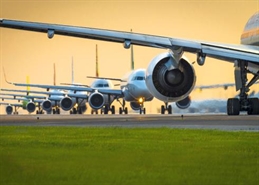
Asia Pacific airlines continued to experience lack of demand in October, according to preliminsry traffic figures released by the Association of Asia Pacific Airlines (AAPA) which said underscored the "devastating impact" of prolonged border closures and travel restrictions on international passenger demand, although air cargo demand was "relatively firm" — reinforcing the need to restore network connectivity given potential capacity shortages.
In a statement, AAPA said crippled by the lack of progress in the reopening of borders in the region, Asia Pacific airlines carried only 1.5 million international passengers in October, just 4.9% of the 31.3 million that travelled in the same month last year.
Offered seat capacity, though comparatively higher, still represented just 12.7% of October 2019 volumes with the international passenger load factor averaged only 30% for the month, significantly below the levels required for airlines to achieve positive cash flow.
Better cargo performance
"Meanwhile, against a backdrop of further improvements to overall business conditions globally, international air cargo demand remained relatively firm," AAPA said.
Despite this better performance, AAPA said traffic as measured in freight tonne kilometres (FTK) terms was still 13% below last year’s level in October, which it said was held back by the lack of passenger service bellyhold space.
Consequently, the average international freight load factor climbed 9.7 percentage points higher to 71.4% for the month, it added.
“Prolonged border restrictions have led to precipitous declines in air traffic and global connectivity, with Asia Pacific alone suffering a 76% plunge," said Subhas Menon, AAPA Director General.
"The dismal numbers underscore the severity of the impact of the COVID-19 pandemic on the airline industry. Whilst government financial support lent critical lifelines to some airlines, already a number of carriers are being restructured, whilst others may not survive this protracted crisis,” he added.
Call to reopening borders
The AAPA chief then called on governments in the region to work together to reopen borders — citing the importance to economic activity and uninterrupted supply chain movement.
“The desire to travel remains strong, evidenced by the marked recovery in domestic travel markets where movement restrictions have been relaxed. Air transport is an enabler of economic activity, and an indispensable conduit for global transport, trade and tourism,” Menon said.
“AAPA calls on governments to redouble their efforts to work cooperatively with other governments and industry stakeholders to safely restart international air travel. Governments must heed calls to adopt and implement mutually agreed protocols.”
The AAPA Director General also referenced to the new ICAO guidelines developed in conjunction with WHO, CDC and ECDC, that recommends incorporating harmonised testing as part of a multi-layered and risk-managed approach to facilitate international air transport.
"As 2021 beckons, Asia Pacific aviation is ready and willing to play its part in a successful restart and recovery. Airlines will also play a critical role in ensuring that the global distribution of COVID-19 vaccines is accomplished in a timely and efficient manner once the necessary regulatory approvals have been confirmed and production can be scaled up accordingly,” he added.



